Huge brasses, strings, and pads made the OB-Xa dominate the hottest artists’ keyboard stands, from Prince to Van Halen’s iconic ‘Jump’.
With OP-Xa V, that same unmistakable presence comes to life right in your DAW. There’s just something about the sound that invites you to dig in with both hands and come up with great parts. True Analog Emulation® ensures an authentic muscle car synthesizer experience - while our added touches add heaps of production horsepower that’ll get your creativity racing.
Chart-topping Spirit
Today’s hottest hits are drawing on ’80s synth sounds more than ever. With OB-Xa in your arsenal, you’ll be ready to produce the next one.
The Real Deal
We went back to the source to model the OB-Xa, analyzing every detail, component, and behavior of the genuine article with TAE® emulation.
Jump Right In
The straightforward user interface and signal path can turn a novice into a seasoned synth enthusiast in record time.
Sound That Slaps
TAE® does not emulate sounds - it duplicates how vintage analog circuits behave, and you’ll hear the difference. Earth-shaking, hair-raising, soul-stirring.
Where Hardware Can’t Go
Trouble-free tempo sync. Gorgeous built-in effects. Even more polyphony. The awe-inspiring nature of a classic synth, the enhancements of software.
The Poly
that Could
Oberheim® already had a legacy of fat-sounding synths. But for many, the OB-Xa was the one that hit the sweet spot.
The OB-Xa packed up to eight massive-sounding synthesizer voices in an integrated, programmable slab form factor. After its debut in December 1980, musicians noticed.
Founded by Tom Oberheim, Oberheim Electronics’ first product was a ring modulator pedal introduced in 1970. Then came the Maestro phaser, then the DS-2A, an early digital sequencer that could record and play back notes from popular analog synths in real time — a mind-blowing feat for 1973. Its success led Oberheim to design his own synthesizer: the Synthesizer Expander Module.
Discover the history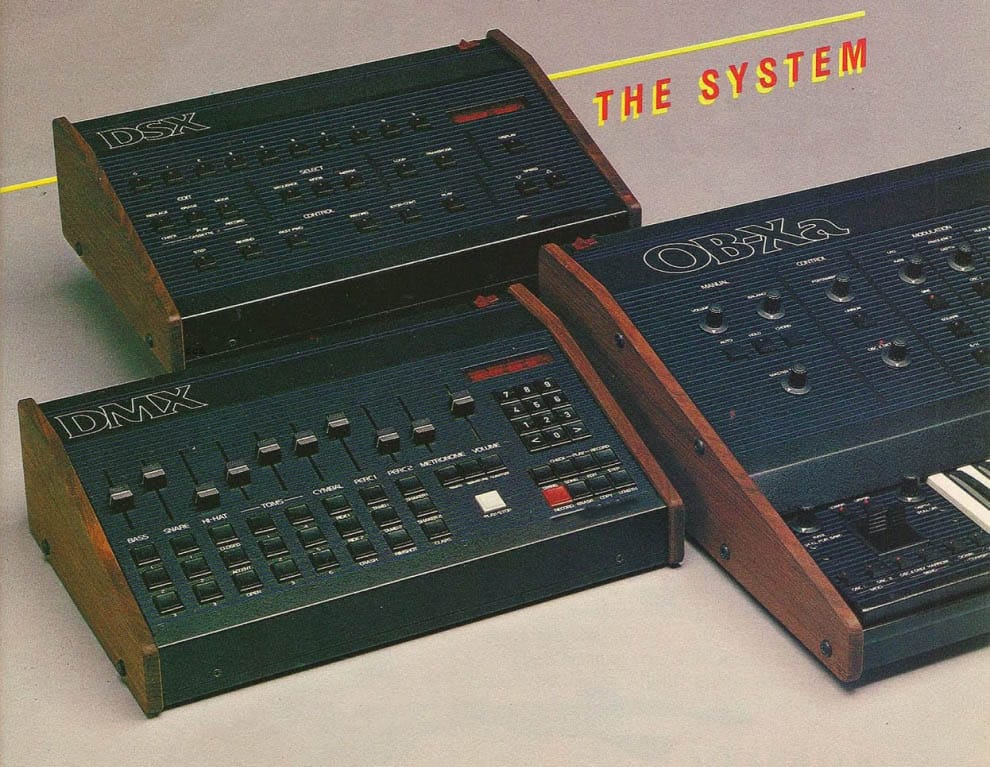
Black and
Blue Beauty
OP-Xa V melds the best of the OB-X, OB-Xa, and OB-8 synths with today’s DAW-centric music workflows.
In many ways it’s the most OB you can get outside of having a collection of all three. Here are just a few of the features that set that benchmark.
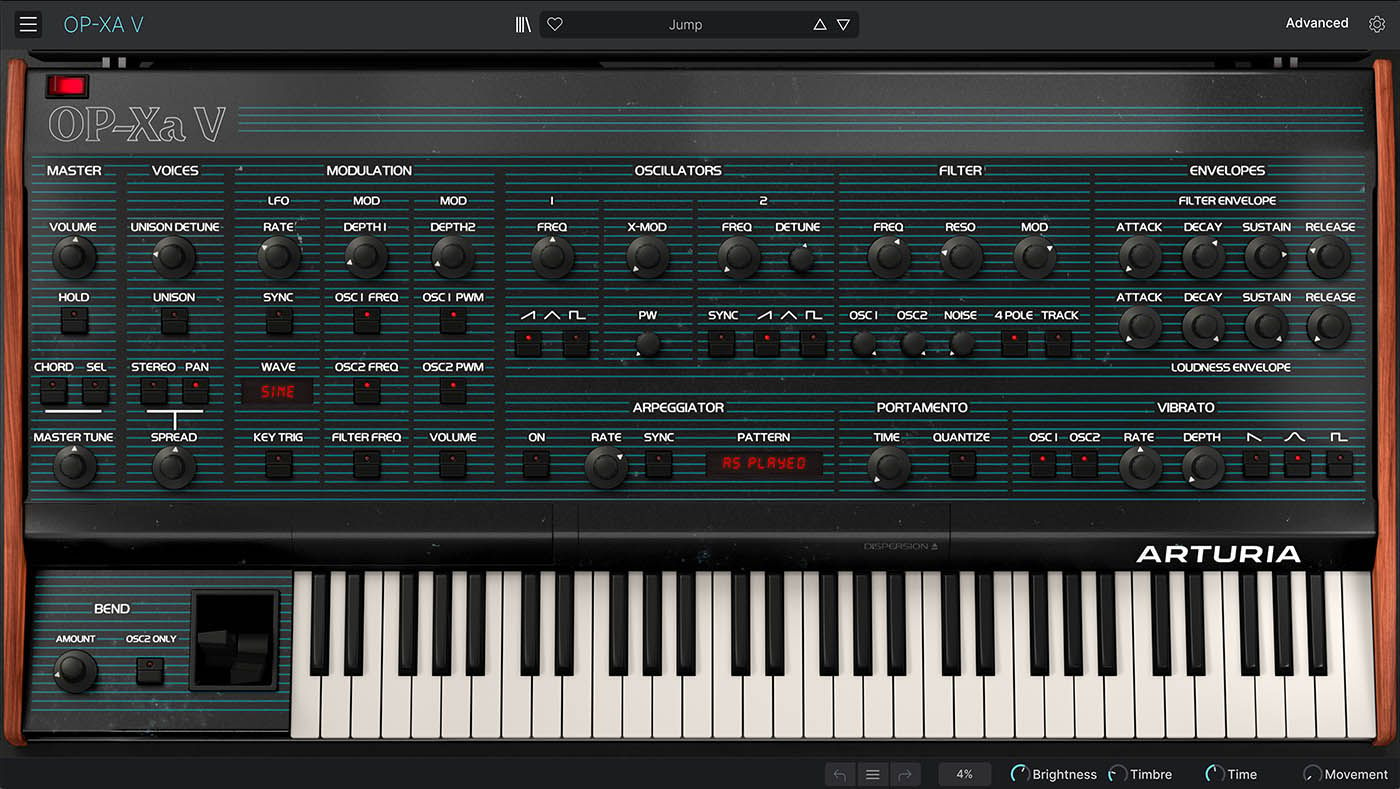
_1
_2
_3
_4
_5
01. Authentic Oscillators
Triangle, saw, and square waves with variable pulse width, cross-mod from the OB-X, and hard sync create the signature sounds of the ’80s.
02. Flexible FIlters
Choose 12dB filtering for the classic OB sound or 24dB mode for more aggressively resonant timbres.
03. Bend One or Both
We duplicate the original’s option to pitch-bend oscillator 2’s pitch only, for musical statements that sing in intervals.
04. Ultrawide
Adjust the stereo spread of the oscillator, filter, and LFO outputs for fatter bass, more expansive pads, and a truly immersive mix.
05. Standalone Vibrato
A comprehensive vibrato section means you don’t need to tie up an LFO to get this go-to musical effect.
Resurrecting
a titan
Our teams of engineers and audio experts set out to capture every velvety-smooth sinewave, every dazzling sawtooth chord, every detuned sub-rich bass, and every split-keyboard stacked timbre that put the OP-Xa on the map.
To fully experience the majesty and raw power of an instrument like this, samples simply won’t cut it. OP-Xa V is the result of exhaustive measuring, analysis, and reverse-engineering of every aspect of the original instrument - and then some.

The unique behavior and sonic character of the Curtis chips played a crucial role in the colossal sound we know and love; replicating the bite and bark of the Curtis filters was an integral part of nailing OP-Xa V’s sound. We also incorporated some choice cuts from the instrument's famous peers - OB-X and OB-8 - and enhanced them with new features for a supremely authentic and far-reaching analog experience.
OB Enhanced
The Advanced Panel makes OP-Xa V more powerful than you can possibly imagine.
Once we nailed the sound, we multiplied the modulation possibilities and added effects derived from our FX Collection. It all adds up to an instrument that’s yesterday and tomorrow at once, and a musical force that will always be with you.

Map performance control sources like velocity and aftertouch to any destination you like with just a few clicks.
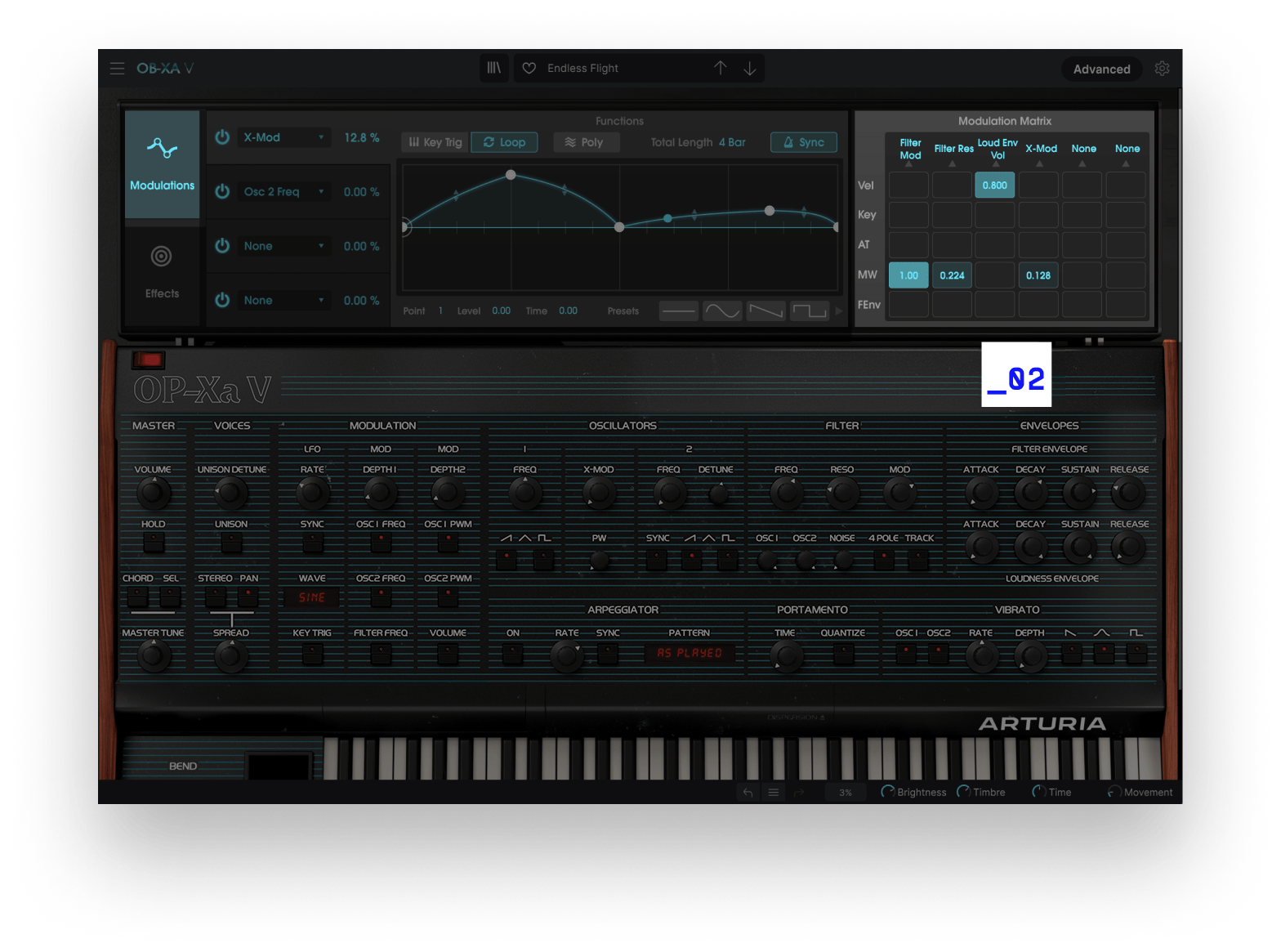
Design and assign your own modulation curves that sync to tempo. Loop ’em or opt for one shot. The possibilities are endless.

Stack up to three FX in series or parallel and choose from nine types including deep reverb, ping-pong delay, and stereo chorus.
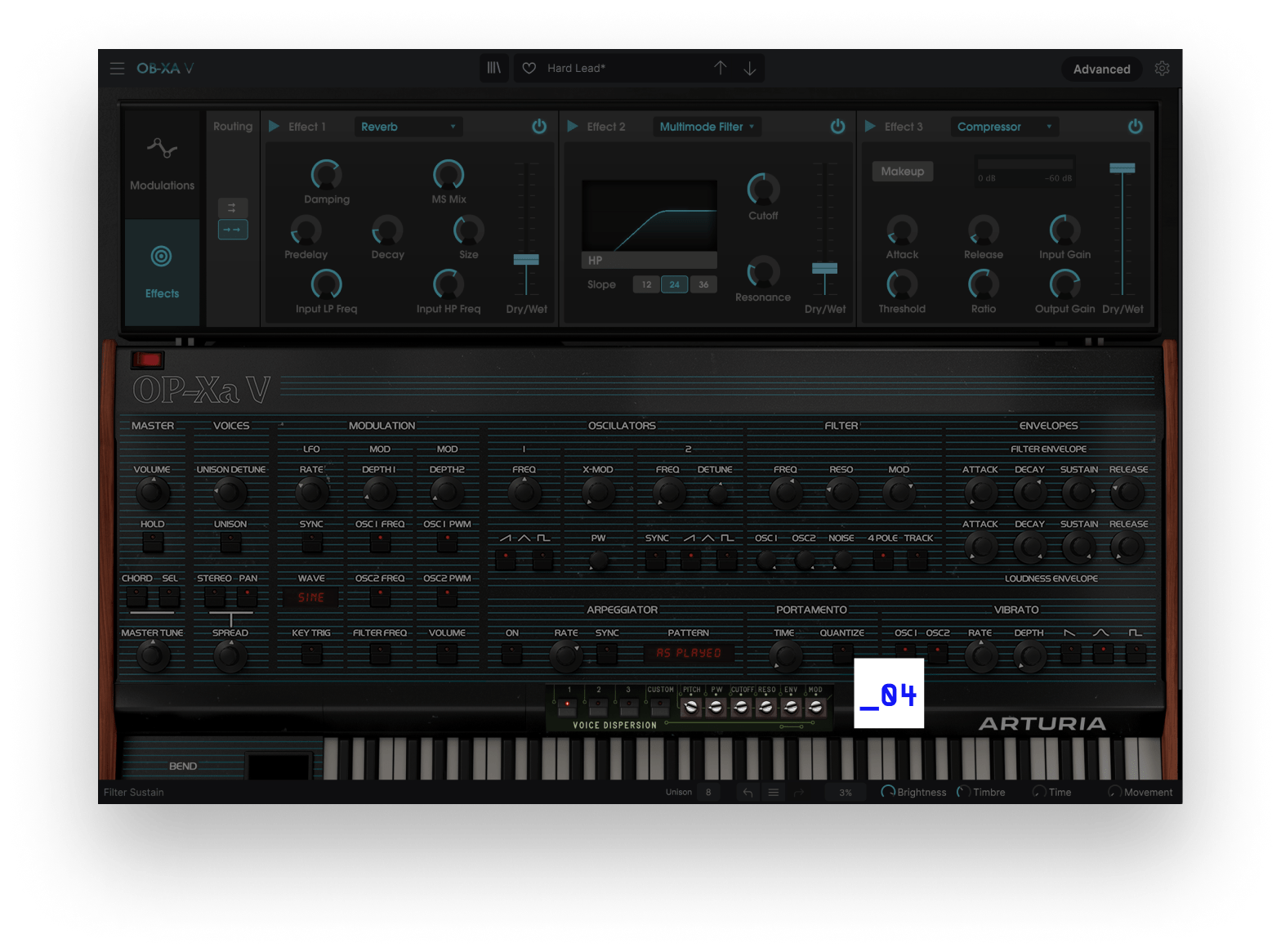
Surgically control variations between several aspects of the voices: pitch, pulse width, cutoff, resonance, envelopes, and modulation.
Écoutez-le
en situation
Hip-hop. Cinematic. EDM. Rock. The original OB-Xa won adherents across all musical genres and applications. These demos from our artists and sound designers showcase just a handful of ways OP-Xa V shines.
Minor Arsenal
Adventurous melodic track, mixing chiptune-like drums and bassline with lush lead and pads.
OB Mystery
Slow and mysterious cinematic track using only OB-Xa V as the sound source. No additional effects nor plug ins were used.
Crunches Under Foot
Evocative Trip Hop track with broken beat track made using only OB-Xa V as the sound source.
Glowsticks & Whistles
Bouncy EDM track making extensive use of the arpeggio settings.
Do We Know
Airy melodic track in which all sounds, even the drums, were made using presets from Solidtrax, that can be found in the instrument.
Sopalin Seroplexx
Based on the "Alphi" preset, used in a arpeggied, synthwave bass way. Additional drums are from the CMI V.
Sopalin
Based on the "Alphi" preset, used in an arpeggiated, synthwave bass way. Additional drums are from the CMI V.
Artistscorner
PressClippings

Inclus dans
V collection
Les claviers de légende réinventés
Cet instrument fait aussi partie de la fameuse V Collection, qui regroupe de nombreux synthés de légende, d’orgues, de pianos et autres claviers qui ont fait l’histoire de la musique. Ils ont été modélisés avec les technologies les plus pointues pour un réalisme frappant, tout en bénéficiant de l’ajout de nouvelles options créatives. La V Collection met à votre disposition les meilleurs claviers de tous les temps, que ce soit en tant que plug-ins dans un DAW, ou en tant qu’instruments individuels autonomes sur scène.
Plus d’infos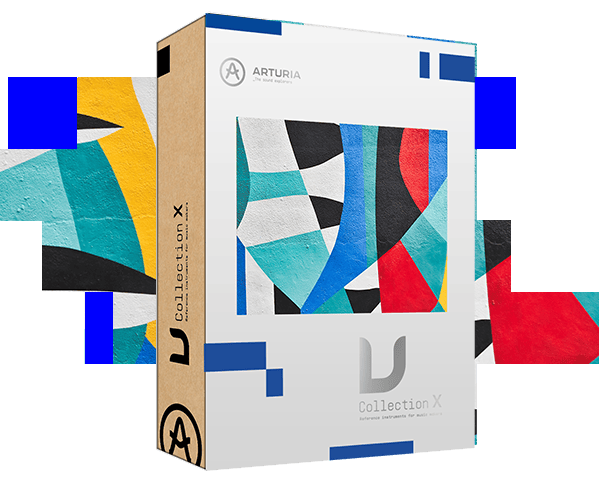
Toutes les fonctionnalités
dont vous avez besoin

Les tutoriels intégrés détaillent chaque aspect de l’instrument, des différents paramètres aux conseils de nos designers sonores, pour que vous puissiez vous concentrer sur votre créativité. C’est simple comme bonjour !

L’Arturia Software Center vous sert à télécharger, organiser et mettre à jour tous vos logiciels d’Arturia au même endroit, ou encore à gérer toutes vos licences sur plusieurs appareils. Plus c’est simple, mieux c’est.

Nos instruments virtuels et nos plug-ins sont conçus pour s’intégrer facilement à votre installation. Quel que soit votre style, vous pouvez expérimenter tout en profitant d’une parfaite compatibilité avec les principaux DAW, aussi bien sur Windows que sur macOS.

Ne passez pas des heures à chercher le son que vous avez en tête. Le navigateur intelligent vous permet de trier les presets par mots-clés, par type d’instrument, style musical, etc. Vous pouvez même sauvegarder vos sons favoris pour les rappeler instantanément dès que vous en avez besoin.

Vous voulez profiter de nos émulations d’instruments classiques avec une immersion visuelle totale ? Vous préférez économiser un peu d’espace sur votre écran ? Les interfaces de tous les instruments virtuels d’Arturia peuvent être redimensionnées à la taille qui vous convient.

Les paramètres des instruments sont directement assignés aux commandes des claviers de la gamme KeyLab d’Arturia, mais ils fonctionnent aussi très bien avec d’autres contrôleurs MIDI. Vous bénéficiez ainsi de macros pour modifier instantanément le son, d’une intégration facile avec le DAW et d’un fonctionnement indépendant.
Galerie
Caractéristiques principales
Stereo spread with left/right offsets on oscillator, filter, and LFO parameters
Modulation matrix
L’arpégiateur
More flexibility on the LFO for easy modulation
Up to 16 voice polyphony
Innovative voice detuning
On-board effects: delay, chorus, reverb, phaser, flanger, compressor, overdrive, multimode filter, and bitcrusher
Oscillators’ continuous X-Mod modulation (cross modulation)
Oscillators’ (1, 2, and noise) mix in filter section for rich sound sources
4 Function Generators
Sleek design for great visual experience of your sound
Seamless preset selection with the visual browser
Over 400 presets
Individual voice panning
Extension panel includes Mod Matrix, four Function Generators, and 3 busses with 9 effects each
Compatibilité avec le système de micro-accordage MTS-ESP d’ODDSOUND
Compatibilité avec le MPE
Exigences techniques
Windows
- Win 10+ (64bit)
- 4 GB RAM
- Processeur quadricœur, 3,4 GHz (4,0 GHz Turbo-boost)
- 3 Go d'espace libre sur le disque dur
- Processeur graphique compatible avec l’OpenGL 2.0
- Ne fonctionne pas avec les processeurs ARM sous Windows
Configuration requise
- Logiciel standalone, plug-in VST, AAX, Audio Unit et compatibilité avec le NKS (DAW en 64 bits uniquement)




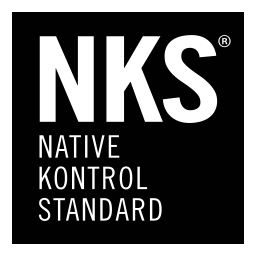
Apple
- Mac OS 11+
- 4 GB RAM
- Processeur quadricœur, 3,4 GHz (4,0 GHz Turbo-boost) ou processeur M1
- 3 Go d'espace libre sur le disque dur
- Processeur graphique compatible avec l’OpenGL 2.0
Compatible avec l’ASC
- L’Arturia Software Center est un outil qui vous permet d’installer, d’activer et de mettre à jour facilement nos logiciels.
Tous les noms de fabricants et de produits mentionnés sur cette page sont des marques commerciales appartenant à leurs propriétaires respectifs, lesquels ne sont en aucun cas associés ni affiliés à Arturia. Les marques commerciales d’autres fabricants sont utilisées aux seules fins d’identification des produits de ces marques, dont les caractéristiques et le son ont été étudiés durant le développement. Tous les noms des équipements, inventeurs et fabricants ont été uniquement inclus à titre illustratif et éducatif, et ne suggèrent en aucun cas une affiliation ni une approbation de la part des inventeurs ni des fabricants des équipements.







